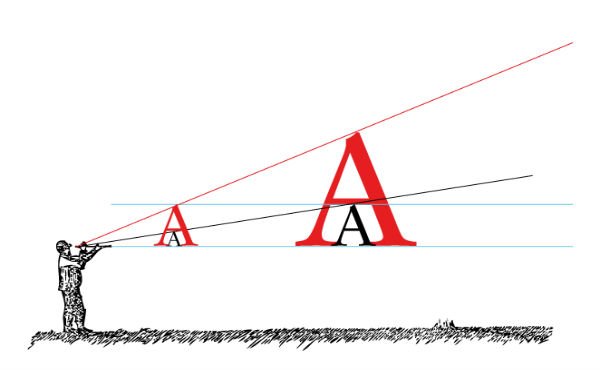Raised Bed Gardening: Soil, Spacing & Veggie Success!
Did you know that the average yield from a raised bed is almost double that of a traditional row garden? That's right – all those perfectly contained veggies pack a serious punch! This increased productivity isn't just about aesthetics; it's about optimizing soil conditions, improving drainage, and creating the ideal environment for your plants to thrive. Let's dive into everything you need to know about creating your own bountiful raised bed garden.
Selecting the Right Soil for Your Raised Beds
The foundation of any thriving garden is the soil, and raised beds are no exception. In fact, because you're creating a contained environment, the soil composition is even more critical. You're not relying on the existing ground soil, so you have complete control over what goes in. This allows you to create the perfect growing medium tailored to the specific needs of your chosen vegetable varieties. The ideal garden soil mix for raised beds is a blend of topsoil, compost, and other soil amendments like peat moss or coconut coir.
The goal is to create a well-draining, nutrient-rich soil that retains moisture without becoming waterlogged. Avoid using soil directly from your yard, as it may be compacted, contain weed seeds, or lack the necessary nutrients. Opt for a high-quality garden soil mix specifically formulated for raised beds. It's an investment that will pay off in healthier plants and a more abundant harvest. Remember to get your soil tested before planting to check the pH level and nutrient content, then amend as necessary.
Consider adding perlite or vermiculite to improve drainage and aeration, especially if you live in an area with heavy clay soil. These amendments will help prevent root rot and ensure that your plants have access to the oxygen they need to thrive.
Determining Optimal Plant Spacing
One of the biggest mistakes beginner gardeners make is overcrowding their plants. Giving each plant enough space is crucial for healthy growth, proper air circulation, and maximizing your yield. Use a vegetable spacing guide to determine the ideal distance between plants, taking into account their mature size.
Square foot gardening is an excellent method for planning your raised bed layout and maximizing space. It involves dividing your bed into a grid of one-foot squares and planting different vegetables within each square based on their spacing requirements. For example, you might plant one tomato plant per square foot, four lettuce plants, or sixteen radishes. This method allows you to grow a wide variety of vegetables in a small space, making it perfect for urban gardeners or those with limited space.
Remember that proper vegetable spacing guide promotes air circulation, reducing the risk of fungal diseases and pests. It also ensures that each plant receives adequate sunlight and nutrients, leading to healthier growth and a more bountiful harvest.
Step-by-Step Planting Guide for Raised Beds
Planting in raised beds is a rewarding process that yields delicious results. Let's walk through the process step-by-step.
Step 1: Prepare the Soil
Before planting, ensure your raised garden beds are filled with the amended garden soil mix. Gently rake the surface to create a level planting area. Moisten the soil thoroughly before planting – this helps settle the soil and provides initial moisture to the plants. Adding a slow-release fertilizer at this stage can give your plants a head start.
Step 2: Planting Your Vegetables
Follow your vegetable spacing guide to determine the optimal planting locations. Dig holes that are slightly larger than the root ball of your transplants. Gently remove the plants from their containers, being careful not to damage the roots. Place the plants in the holes and backfill with soil, gently firming around the base. Water thoroughly after planting.
If you're direct-sowing seeds, follow the instructions on the seed packet for planting depth and spacing. Keep the soil consistently moist until the seeds germinate.
Step 3: Watering and Maintenance
Water deeply and regularly, especially during dry periods. Use a soaker hose or drip irrigation system to deliver water directly to the roots, minimizing water loss through evaporation. Mulch around your plants with straw, wood chips, or compost to help retain moisture, suppress weeds, and regulate soil temperature. Regularly check your plants for pests and diseases and take appropriate action.
Remember to rotate your crops each year to prevent soil depletion and reduce the risk of pest and disease problems. Consider incorporating companion planting techniques to attract beneficial insects and improve the health of your plants. For example, planting basil near tomatoes can help repel pests and improve the flavor of the tomatoes.
Companion Planting Chart for Raised Beds
Below is a helpful chart detailing some beneficial companion planting combinations to maximize your raised bed's potential. Companion planting can help deter pests, attract pollinators, and even improve the growth of neighboring plants.
| Vegetable | Good Companions | Bad Companions |
|---|---|---|
| Tomatoes | Basil, Carrots, Onions, Garlic | Cabbage, Broccoli, Fennel |
| Carrots | Rosemary, Sage, Onions, Lettuce | Dill, Fennel |
| Lettuce | Carrots, Radishes, Cucumbers | Parsley |
| Cucumbers | Marigolds, Nasturtiums, Beans, Peas | Sage, Aromatic Herbs |
| Peppers | Basil, Onions, Carrots | Fennel |
Optimizing Drainage and Watering
Proper drainage is vital for the health of your raised bed garden. While raised beds naturally offer better drainage than in-ground gardens, it's still important to ensure that water doesn't accumulate at the bottom of the bed. If you're building your raised bed directly on the ground, consider adding a layer of gravel or coarse sand at the bottom to improve drainage.
Overwatering is a common mistake that can lead to root rot and other problems. Allow the soil to dry out slightly between waterings, and avoid watering the foliage of your plants, which can encourage fungal diseases. The best time to water is early in the morning, so the foliage has time to dry before nightfall.
Consistent watering is crucial for the successful cultivation of vegetable varieties in your raised bed garden. Consider using a rain barrel to collect rainwater for irrigation. This is an eco-friendly way to conserve water and provide your plants with nutrient-rich water.
Troubleshooting
Even with careful planning, you may encounter some challenges in your raised bed garden. Here are some common problems and their solutions:
- Poor Drainage: Add more organic matter to the soil or incorporate perlite or vermiculite. If the problem persists, consider adding a layer of gravel at the bottom of the bed.
- Pests: Identify the pests and use appropriate organic pest control methods, such as insecticidal soap, neem oil, or diatomaceous earth. Attract beneficial insects to your garden by planting flowers that attract them.
- Diseases: Choose disease-resistant vegetable varieties and practice good sanitation to prevent the spread of diseases. Remove infected plants promptly and dispose of them properly.
- Nutrient Deficiencies: Amend the soil with compost or other organic fertilizers to provide your plants with the nutrients they need. Consider getting a soil test to determine which nutrients are lacking.
Remember, consistent observation is key. Regularly check your plants for signs of stress, pests, or diseases, and take action promptly to prevent problems from escalating.
Pro Tips for Raised Bed Success
- Use Quality Soil: Don't skimp on soil quality. A good garden soil mix is the foundation of a successful raised bed garden.
- Plan Your Layout: Use a vegetable spacing guide and consider companion planting to maximize your yield.
- Water Wisely: Water deeply and regularly, but avoid overwatering.
- Mulch: Mulch to conserve moisture, suppress weeds, and regulate soil temperature.
- Fertilize Regularly: Feed your plants with compost or other organic fertilizers throughout the growing season.
- Protect Your Plants: Use row covers or netting to protect your plants from pests and extreme weather conditions.
FAQ
- What is the best height for a raised bed?
- The ideal height is typically between 6 and 12 inches. This allows for adequate root growth and drainage. Taller beds can be easier on your back, but may require more soil.
- Can I use regular garden soil in raised beds?
- While you *can*, it's not recommended. Regular garden soil is often compacted and may not drain well. A garden soil mix specifically formulated for raised beds will provide better results.
- How often should I water my raised bed?
- Watering frequency depends on the weather, soil type, and the specific needs of your plants. Check the soil moisture regularly and water when the top inch feels dry.
- What are some good vegetables to grow in raised beds?
- Most vegetables thrive in raised beds, including tomatoes, peppers, lettuce, carrots, and herbs. Choose vegetable varieties that are well-suited to your climate and growing season.
- How do I prevent weeds in my raised bed?
- Use a thick layer of mulch to suppress weeds. Regularly remove any weeds that do appear. Avoid using soil that contains weed seeds.

